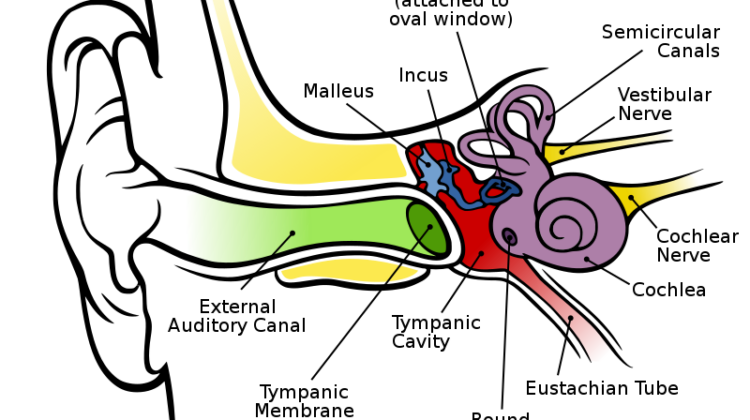
Marcia Jenneth Epstein, Ph.D. has once again contributed to Acoustic Bulletin with this guest blog post. We appreciate your work, Marcia! Read more about our guest blogger and find her other post here.
Hearing is our ”second sense”.
Phrases used in Western culture to demonstrate understanding – at least in English – are often visual: “I see what you’re saying” or “let’s put more light on the subject.” The human brain gives a majority of sensory neurons to vision, so much of our thinking follows that pattern. [1]

Hearing is our “second sense.” As a result, we need to learn listening skills as children – and we sometimes struggle to appreciate sound in our everyday lives because there are so many auditory distractions. In the absence of earlids to screen out unwanted sound, those of us in the modernized world get conditioned not to listen as our surroundings fill with mechanical and broadcast noises competing constantly for our attention.
We hear 0 dB
Hearing and listening are different activities. In the absence of hearing impairment, we are capable of physically hearing everything around us that’s upward of 0 dB, but much or most of it doesn’t register in memory because we aren’t paying attention to it.
Listening can be a conscious act that directs attention to sound (common examples are speech and music), or the compelling result of a startle reaction to a sound that deviates from the ambient background pattern and demands attention, like a siren or a dog’s bark.
Sonic backgrounds
Reactions vary with the complexity of sonic background: when you hear a siren in light traffic your reaction may be immediate; it will be at least slightly less so if your car stereo is on.
If you live in a city with high ambient mechanical noise, your nervous system may be conditioned to ignore it while your hearing acuity is gradually dulled. The human nervous system, physically identical to that of our prehistoric ancestors, interprets the roars and drones of urban traffic and machinery are those of predators.

Because of this unconscious reaction, they cause subtle stresses leading to muscle tension, fatigue, irritability, and insomnia, regarded as “normal” because always present. Given noisy surroundings, how can we overcome stress responses?
Acoustic ecology and soundscape studies
One remedy is to become more aware of sound as part of the environment. This concept, first articulated by Canadian composer and educator R. Murray Schafer[2], has inspired a movement known as acoustic ecology or soundscape studies, which examines the sonic environment and its effects on the health of humans, animals, and communities.
Following its precepts is basically a matter of noticing what you hear by listening consciously and examining the sound’s qualities: is it loud or soft, abrupt or sustained, steady or intermittent? What is producing it, how do you feel about it, what does it remind you of? Noticing such properties will open possibilities for knowing your environment through hearing it, a skill that was and is common to Indigenous and traditional rural cultures but rare in modern ones.
Soundwalking
The acoustic ecology movement teaches soundwalking as a way to develop listening skills. The rules are simple: take a walk , alone or with a partner or small group, without any talking or music. Just listen: to footsteps, trees, birds, traffic, other people’s conversations, and anything else you encounter. Make notes or discuss afterward.

The experience of listening intently will make you more aware of how you feel in noisy and quiet surroundings. Soundwalking in natural settings is especially beneficial for health and healing, as cortisol levels decrease and the nervous system down-regulates to a state of calm.
Hildegard Westerkamp
Interested in finding out more? Canadian composer and educator Hildegard Westerkamp is our major authority on soundwalking, thanks to copious research and writing as well as creative projects that fuse environmental sound with original music. Her website gives access to speeches, articles and compositions that explain the benefits of conscious listening and inspire awareness about environmental sound.
[1] Species differ: for example, dogs’ brains have a majority of sensory neurons dedicated to smell.
[2] In memoriam: 1933-2021.

